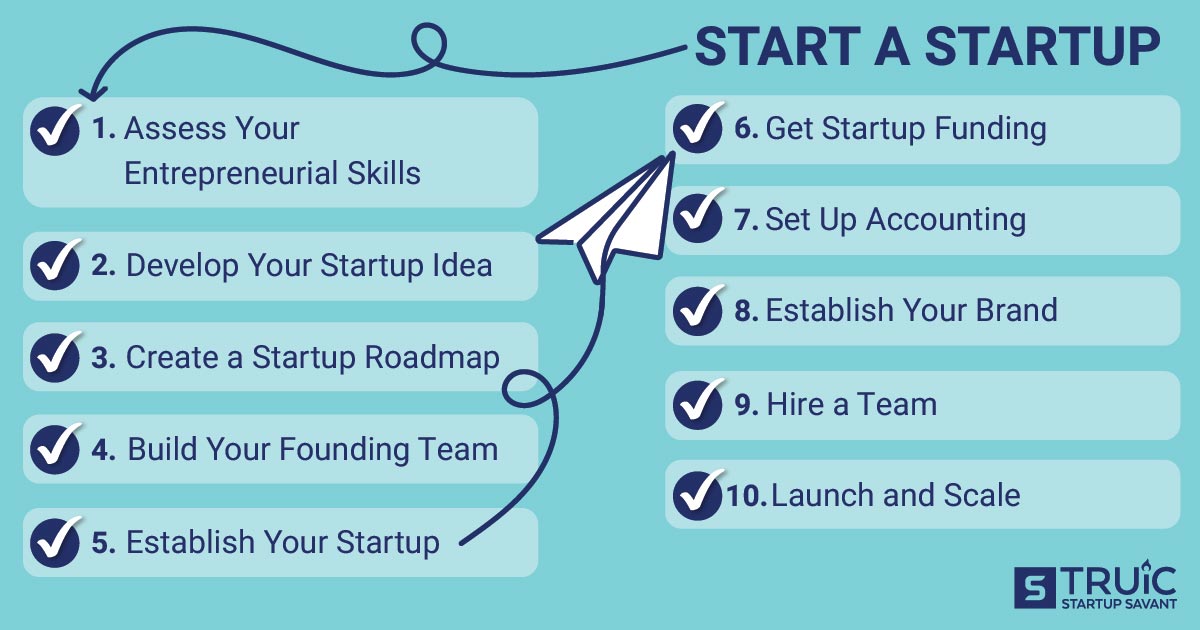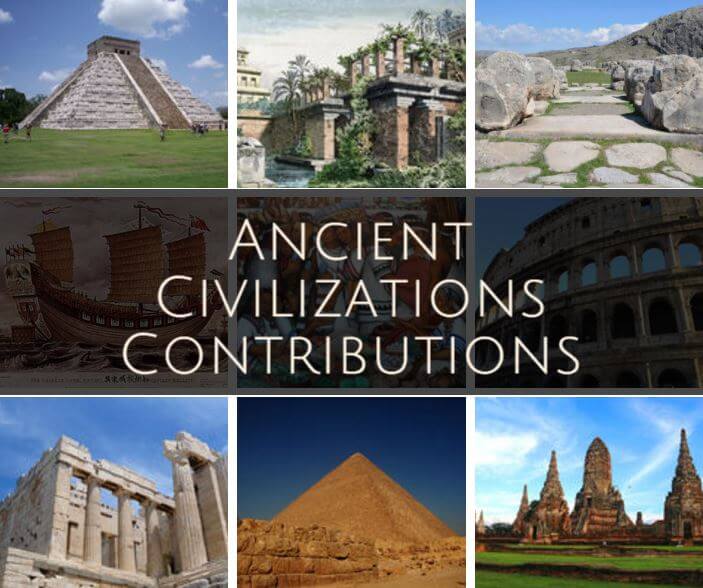Discover Pandipedia
Pandipedia is the world's first encyclopaedia of machine generated content approved by humans. You can contribute by simply searching and clicking/tapping on "Add To Pandipedia" in the answer you like. Learn More
Expand the world's knowledge as you search and help others. Go you!

Launching a startup requires meticulous planning and execution across various stages. Here’s a comprehensive guide on the steps involved in this journey, synthesized from multiple sources.
Identify the Problem
The first and most essential step is to identify the problem your startup aims to solve. This involves articulating the pain points of potential customers rather than jumping straight to the solutions. For instance, when Netflix was conceived, the problem wasn't just about delivering movies but also about addressing the high cost of cable and limited viewing options available through traditional television[2]. Understanding the problem better will also guide your marketing and product development efforts.
Conduct Market Research
Before moving forward, it's vital to perform thorough market research. This includes understanding competitor offerings and how your idea differentiates from existing solutions. Investigate what current solutions resonate well with customers and explore gaps that could be filled by your product[3].
Interviewing potential customers and industry experts can provide insights into the issues facing your target market. For example, learning from those who’ve previously worked in your target industry helps clarify what the existing problems are, setting a foundation for your startup's unique value proposition[2][4].
Develop Your Product Concept
Once you've identified the problem, the next step is to create a detailed product concept. This concept narrates what your product will be and addresses customer needs[2]. It can include sketches or text descriptions that creatively convey how your solution will be beneficial to potential users.
Validate Your Idea with MVP
Before fully developing your product, consider creating a Minimum Viable Product (MVP). This prototype should be the simplest version of your product that demonstrates the core functionalities[2]. Use the MVP to gather feedback from beta users, who are usually early adopters. Their feedback is crucial, as it allows you to refine your product and address flaws before a full-scale launch.
Craft a Business Plan

After validating your MVP, write a formal business plan. A business plan outlines key components such as your target audience, marketing strategies, financial projections, and operational plans[3][4]. This document serves not only as a roadmap but also as a crucial tool for attracting potential investors or partnerships.
Secure Funding
Most startups require funding, so the next step is to explore your funding options. You might consider bootstrapping, seeking out angel investors, applying for small business loans, or exploring government grants[1][4]. To attract investors, developing a compelling pitch deck is imperative, outlining the solutions you provide, your market size, and growth projections[4].
Choose a Business Structure
Deciding on your startup’s legal structure is key for regulatory compliance and tax purposes. Your options include a sole proprietorship, partnership, or limited liability company (LLC). Ensure you understand the benefits and legal obligations associated with each structure before finalizing your choice[3].
Register Your Business
Once you’ve decided on a structure, formalize your startup by registering it with the appropriate government bodies. This process includes obtaining an Employer Identification Number (EIN) from the IRS, which is necessary for tax purposes and hiring employees[4].
Build Your Brand and Online Presence
A strong brand identity is critical as it represents your startup’s personality and values. Create a logo, brand colors, and a consistent tone of communication. Additionally, establish an online presence through a professional website that serves as your digital storefront[3][4]. This website should be optimized for search engines to increase your visibility.
Develop a Marketing Strategy

Creating a robust marketing strategy is essential for customer acquisition. This strategy should clarify your objectives, target market, and selected marketing channels—whether digital (social media, SEO) or traditional (print, events)[3]. Regularly reviewing and adjusting your strategy based on performance metrics and customer feedback will ensure ongoing success.
Launch and Iterate
With all the pieces in place, it’s time to launch your startup. However, the process doesn’t end there. Continuously gather customer feedback post-launch to identify areas for improvement. This reassessment phase is vital, as it allows you to pivot when necessary and ensures you remain aligned with market needs[2][4].
Ensure Compliance and Insurance
Finally, ensure that you remain compliant with all applicable regulations and industry standards. Obtain necessary licenses and permits for your business[4]. Furthermore, securing adequate business insurance is crucial to mitigate risks associated with operations[3].
Conclusion
Launching a startup involves a series of well-defined steps from problem identification to product development, business planning, legal formalities, and marketing strategies. Each phase is integral to establishing a solid foundation and ensuring ongoing growth and adaptability in the dynamic market landscape. Staying flexible and responsive to customer feedback will ultimately lead you to a successful business venture.
Let's look at alternatives:
- Modify the query.
- Start a new thread.
- Remove sources (if manually added).
- Request a manual search from our human research team.

A travel itinerary is 'a schedule of events relating to planned travel, generally including destinations to be visited at specified times and means of transportation to move between those destinations'[1]. It can serve various purposes for different kinds of travellers, with examples including business trips and road trips. The construction of a travel itinerary may involve the use of travel literature, guide books, or online trip planners, and is typically prepared by a travel agent, though many travellers now prefer a do-it-yourself approach[1]. Once finalized, the itinerary details are entered into an airline reservation system, where reservations and bookings are made[1].
Let's look at alternatives:
- Modify the query.
- Start a new thread.
- Remove sources (if manually added).
- Request a manual search from our human research team.
Get more accurate answers with Super Search, upload files, personalised discovery feed, save searches and contribute to the PandiPedia.
Let's look at alternatives:
- Modify the query.
- Start a new thread.
- Remove sources (if manually added).
- Request a manual search from our human research team.
Let's look at alternatives:
- Modify the query.
- Start a new thread.
- Remove sources (if manually added).
- Request a manual search from our human research team.

Ancient civilizations have significantly shaped modern society through various advancements in culture, technology, governance, and other fields. By understanding and appreciating these contributions, we gain insight into the development and progression of human civilization. This report explores how several ancient civilizations have influenced today's world.
Technological and Agricultural Advancements
Mesopotamia
Mesopotamia, often recognized as the world's first civilization, made numerous contributions that are still relevant today. One of the most notable is the invention of cuneiform writing, which revolutionized communication and record-keeping[3]. Mesopotamians also developed one of the earliest known calendars, structured around lunar phases and effectively used agriculture, influencing modern calendar systems[3]. The plow, another Mesopotamian invention, significantly enhanced agricultural productivity and remains foundational in modern farming[3]. Additionally, Mesopotamians invented the wheel and established the first forms of urban planning and irrigation systems[1][3][5].
Egypt
The ancient Egyptians were pioneers in various fields, particularly in architecture and engineering. Their pyramids and temples exemplify advanced building techniques and a deep knowledge of mathematics[2]. Egyptians also made significant medical advancements, including the development of surgical methods and the use of herbs and drugs, which influence medical practices even today[1][5][7]. They contributed to the field of writing through the creation of hieroglyphics, one of the earliest writing systems, influencing modern alphabets and written communication[2][3][5].
China
Ancient China was a powerhouse of innovation. Chinese inventions such as paper, printing, gunpowder, and the compass are integral parts of modern technology[1][2][3]. The Chinese also made early advancements in silk production, block printing, and acupuncture, which remain relevant in today's textile industry, publishing, and healthcare[1][5][6].
Philosophical and Scientific Contributions
Greece
Ancient Greece is renowned for its contributions to philosophy, democracy, and science. Philosophers like Socrates, Plato, and Aristotle laid the foundational principles of Western philosophy, which shaped modern critical thinking, ethics, and political theory[2][10]. The concept of democracy, pioneered in Athens, forms the basis of many contemporary political systems[4]. Furthermore, Greek advancements in science and mathematics, including the work of Pythagoras and Hippocrates, continue to underpin modern scientific and mathematical thought[1][10].
India
India's ancient civilization contributed profoundly to philosophical thought, mathematics, and medicine. The concept of zero and the decimal system, developed by Indian mathematicians, revolutionized mathematics globally[2][3]. Moreover, Indian philosophical schools such as Vedanta, Buddhism, and Jainism have inspired countless spiritual and philosophical traditions worldwide[1][2]. Practices like yoga and Ayurveda, originating from ancient India, remain popular for their holistic approach to health and wellness[2][3].
Legal and Governance Systems
Rome
The Roman Empire's influence on modern law and governance is vast. The Roman legal system, with its principles of justice and codification of laws, serves as the foundation for many contemporary legal systems, including those of the United States and Europe[2][4]. Roman engineering feats, such as the construction of roads, aqueducts, and the use of concrete, have set standards for modern infrastructure[1][4][8]. The concept of citizenship and civic duty promoted by the Romans is echoed in today's political discourse[4].
Persia
The Persian Empire's centralized administration and extensive trade networks played a crucial role in connecting diverse cultures and economies[2]. Persian art, literature, and architecture have also left a lasting legacy, influencing artistic expressions and cultural exchanges in modern society[2][3].
Contributions to Arts and Culture
Egypt
Ancient Egypt's artistic and architectural achievements have inspired countless artists and architects throughout history. The pyramid form, for instance, continues to influence modern architecture, seen in structures like the Louvre Pyramid in Paris[1][3][7]. Egyptian literature and art provide valuable insights into their culture and beliefs, which continue to captivate contemporary audiences[3][7].
Rome
Roman contributions to art and architecture are profound, with innovations such as the use of arches, domes, and concrete in construction[1][2][4][8]. The Colosseum's design has influenced the structure of modern sports stadiums, and Roman sculpture and frescoes remain admired for their realism and detail[4][8].
Maya and Aztec

The Maya and Aztec civilizations made significant advancements in astronomy, mathematics, and architecture. The Maya calendar, known for its accuracy, has influenced modern timekeeping[1][2]. Their architectural achievements, including the construction of pyramids and cities, display a high level of engineering skill and artistic creativity[1][3].
Conclusion
The contributions of ancient civilizations to modern society are extensive and multifaceted. From technological innovations and agricultural practices to philosophical thought and legal systems, the legacy of these early cultures continues to shape our world. By studying and appreciating these ancient advancements, we gain a deeper understanding of the roots of contemporary society and the enduring impact of human ingenuity and creativity.
Let's look at alternatives:
- Modify the query.
- Start a new thread.
- Remove sources (if manually added).
- Request a manual search from our human research team.

Google's objectives for its services center on enhancing user experience and generating revenue while securing distribution for its offerings. The company aims to increase Internet activity, which subsequently boosts search traffic[1]. Additionally, Google aspires to satisfy diverse user needs and advertiser objectives to ensure user retention and long-term revenue[4][6].
Moreover, Google's partnerships, such as with Samsung, are designed to create successful revenue share agreements that promote its services[5]. Their strategy also includes focusing on monetizing transactions within the Play Store and investing in improving Android services to reach a wider audience[2]. Overall, Google’s commitments reflect a keen focus on user satisfaction and operational efficiency[3].
Let's look at alternatives:
- Modify the query.
- Start a new thread.
- Remove sources (if manually added).
- Request a manual search from our human research team.
Get more accurate answers with Super Search, upload files, personalised discovery feed, save searches and contribute to the PandiPedia.
Film has the remarkable ability to evoke a wide array of emotional responses from its audiences. By employing various techniques in cinematography, sound design, and narrative structure, filmmakers are able to tap into the psychological aspects of viewers' experiences, guiding them through emotional journeys that resonate deeply.
Cinematography Techniques
Cinematography plays a critical role in shaping the emotional landscape of a film. Techniques such as lighting, camera angles, color symbolism, and composition are fundamental in creating the desired emotional impact.
Lighting
Lighting is essential for establishing mood and atmosphere. Techniques like low-key lighting create shadows that evoke feelings of fear and suspense. This approach keeps significant portions of the screen in darkness, allowing the audience's imagination to play a role in building tension[2]. In contrast, high-contrast lighting can emphasize conflict and drama through sharp shadows and bold highlights, often seen in thriller or noir genres[1][4]. Soft, diffused lighting creates warmth, ideal for romantic scenes, fostering connection to characters[1].
Color also influences emotion significantly; for example, reds can evoke passion or danger, while blues can convey sadness or calmness[1][4][5]. Using warm hues can evoke happiness, whereas cooler tones might suggest melancholy or unease, directly affecting how audiences perceive emotional content onscreen[7][8].
Camera Angles
Camera angles further manipulate emotional responses. Close-ups allow viewers to connect intimately with characters by capturing nuanced expressions, thus conveying deep emotions without the need for dialogue[1][4]. Low-angle shots can make characters appear powerful and dominant, creating a sense of awe or intimidation, whereas high-angle shots can imply vulnerability and inferiority[1][8].
Moreover, tilted or Dutch angles can portray disorientation or tension, making the audience feel that something is amiss—commonly used in horror films[2][8]. These techniques not only engage viewers but also shape their perceptions of character dynamics and plot developments.
Composition
Effective composition also aids emotional storytelling. Techniques such as the rule of thirds help create an emotional weight in scenes, where placing significant elements along these lines draws the viewer’s attention naturally and heightens relational dynamics between characters or objects[1][4].
Sound Design
Sound is equally important in evoking emotions. This includes the strategic use of music, sound design, and dialogue. A well-orchestrated soundtrack can amplify emotional scenes, whether it's a soaring melody that evokes joy or a haunting score that builds suspense[5][7].
Sound effects play a vital role, too. For instance, ambient sounds can create atmosphere—chirping birds might suggest peace, while a crack of thunder could introduce anxiety. The deliberate use of silence or sudden loud noises can trigger “startle responses” in viewers, further enhancing shock or fear[2][6][9].
Narrative Techniques
The way a story is structured also deeply influences emotional engagement. Elements such as character development, foreshadowing, and plot twists keep audiences invested in the narrative. Character arcs allow viewers to connect with the characters' journeys, feeling their struggles and triumphs as their own[3][4].
Foreshadowing builds anticipation, subtly hinting at future events, which can intensify emotional responses when the payoff occurs[3]. Unexpected plot twists can elicit strong reactions, from disbelief to elation, altering how the audience perceives the narrative trajectory[6][8].
Audience Engagement Through Empathy
One of the primary emotional triggers in film is the audience's ability to empathize with characters. As viewers witness characters confronting challenges and emotional dilemmas, they are encouraged to reflect on their own lives and experiences. Techniques such as first-person narration or POV shots help immerse the audience into the characters' perspectives, enhancing emotional connection[9]. This immersion can convert characters from mere actors to relatable figures with whom viewers can share an emotional bond[3][4].
Conclusion
In summary, filmmakers employ a rich tapestry of techniques to provoke emotional responses in their audiences. Through thoughtful cinematography, engaging sound design, and careful narrative structure, films can transport viewers through a spectrum of emotions. Whether through creating suspense, evoking joy, or inspiring empathy, these artistic choices work in concert to leave a lasting impact long after the final credits roll. Each element, from lighting to character development, contributes to a greater understanding of the human experience, highlighting the profound power of film as a medium for emotional storytelling.
Let's look at alternatives:
- Modify the query.
- Start a new thread.
- Remove sources (if manually added).
- Request a manual search from our human research team.

Snake Plant (Sansevieria)
Known for its drought tolerance and adaptability to various light levels, including low light[2][3][8].

Spider Plant
Easy to grow, tolerating neglect, low light, and varying watering frequencies, while also helping to purify the air[2][3][8].
Pothos (Devil’s Ivy)
A rapid grower that prospers in low light and is highly tolerant of irregular watering[2][3][8].
Peace Lily
Notably easy to care for, requiring moderate watering and able to thrive in low light conditions[1][2][3].

Cast Iron Plant
Famously indestructible, this plant thrives in low light and requires very little water[1][3][10].


Philodendron
Appreciates low to medium light and infrequent watering, making it ideal for beginners[13][14].

Rubber Plant
Easygoing and tolerant of low light, this plant has large, glossy leaves[2][8][13].

Jade Plant
A succulent that thrives in bright light and can endure long periods without water[1][7][14].

Chinese Evergreen
Known for its colorful leaves, this plant does well in low light and needs infrequent watering[1][2][13].

Prayer Plant
Features unique leaves that move in response to light, thriving in low light and needing regular humidity[9][14].

Bird of Paradise
While it prefers bright light, it can tolerate less ideal conditions and is relatively easy to care for[8].




Fiddle Leaf Fig
Popular for its large, glossy leaves, it prefers bright light but can tolerate being underwatered[9][14].

Boston Fern
Prefers a humid environment and indirect light, but is generally easy to care for[7][15].

Maranta Red Prayer Plant
Adapts well to various lighting conditions, needing moderate humidity and watering[15].


Tillandsia (Air Plants)
Growing without soil, they only need regular misting or dunking in water[5][14].
Let's look at alternatives:
- Modify the query.
- Start a new thread.
- Remove sources (if manually added).
- Request a manual search from our human research team.
Liam Payne, known for his role in the global phenomenon One Direction, has undergone a significant transformation from boy band member to an established solo artist. His journey reflects resilience, artistry, and the challenges of navigating fame in a highly scrutinized world.
Early Beginnings and Rise to Fame

Liam’s musical journey began on the UK television show The X Factor, where he initially auditioned in 2008 but was unsuccessful. He returned in 2010, where, after being eliminated as a solo artist, he was placed in a group with Harry Styles, Zayn Malik, Louis Tomlinson, and Niall Horan, forming One Direction. The band finished third but was signed by Simon Cowell, launching them into stardom with hits like “What Makes You Beautiful” and “Story of My Life”[1][7]. One Direction quickly became one of the best-selling boy bands of all time, with over 70 million records sold worldwide and numerous awards, including seven Brit Awards and six American Music Awards[9].
Payne distinguished himself not only as a vocalist but also as a songwriter. His contributions helped shape the band's sound, portraying him as a thoughtful and grounded figure amidst the chaos of fame[8][11].
Transition to Solo Career
After One Direction announced a hiatus in 2016, following Malik’s departure, Payne seized the opportunity to explore his individual musical identity. In 2017, he released his debut solo single, “Strip That Down,” featuring rapper Quavo. This track marked a departure from his boy band days and showcased a more mature, R&B-influenced sound. It reached the top 10 on the Billboard Hot 100, signaling a successful transition to solo artistry[2][5][8].
Despite this initial success, the path was not without its hurdles. Payne’s first solo album, LP1, released in 2019, received mixed reviews. Critics noted that while his talent was evident, the album lacked a cohesive narrative[9]. Throughout his solo career, he has experimented with diverse musical styles that include pop, hip-hop, and R&B, indicating his growth as an artist[4][11].
Personal Struggles and Mental Health
While establishing his career, Payne openly faced personal challenges, including issues with mental health and substance abuse. He spoke candidly about his struggles with anxiety and depression, particularly during the height of One Direction's fame. This vulnerability has resonated with fans, contributing to his image as a relatable and genuine figure[7][8]. He underwent rehabilitation for alcoholism and has been proactive in raising awareness about mental health issues[5][8].
In his personal life, Payne has also managed the complexities of fatherhood. He shares a son, Bear, with singer Cheryl Cole, with whom he has maintained a cooperative co-parenting relationship despite their breakup[4][9]. His experiences as a father have profoundly influenced his outlook and priorities[7].
Recent Developments and Future Prospects
As of 2023, Payne continued to release music and expressed intentions to produce a second album, although initial plans were stalled indefinitely due to his untimely death on October 4, 2023. His final single, “Teardrops,” released earlier that year, did not achieve significant chart success, reflecting the difficulties he faced in recapturing the momentum of his earlier hits[2][5].
In interviews, Payne had hinted at a desire to experiment more with his sound and was reportedly excited about the prospect of touring again, showcasing his readiness to reconnect with fans[6][11]. At the time of his death, he was reportedly in the process of working on new music, suggesting a future filled with potential, despite the challenges he battled[6][8].
Legacy and Impact

Liam Payne's evolution from a boy band star to a solo artist illustrates the complexities of fame and the music industry. His contributions to One Direction created a lasting legacy, while his solo endeavors showcased his versatility and commitment to his craft. Fans and critics alike acknowledge his artistry and the impact he made in the pop music landscape. Even in his struggles, Payne's honesty and resilience continued to inspire many, marking his place as not only a talented musician but also a relatable figure in the entertainment world[1][6][11].
As his story continues to resonate following his death, Liam Payne remains a poignant reminder of the highs and lows of life in the spotlight, as well as the enduring spirit of creativity and connection through music.
Let's look at alternatives:
- Modify the query.
- Start a new thread.
- Remove sources (if manually added).
- Request a manual search from our human research team.

Advertising revenue is what drives Google's monopoly power today.
MR. DAHLQUIST[1]
Google has raised search ad prices by 10 percent for some queries.
Mr. Dischler[2]

The ability by Google to raise price whenever it desires is the definition of a monopoly.
MR. DAHLQUIST[1]
Our objective is to address user queries, address their information needs.
Richard Holden[3]
Google is an Internet company, and the ability for our products and services to be useful is really predicated on the Internet working well.
Jamie Rosenberg[4]
Let's look at alternatives:
- Modify the query.
- Start a new thread.
- Remove sources (if manually added).
- Request a manual search from our human research team.






:max_bytes(150000):strip_icc()/grow-dracaena-marginata-indoors-1902749-3-d5d6beaeb1dd4e82af786fc61ec8047d.jpg)
:max_bytes(150000):strip_icc():format(webp)/_DSC58741-297432ef09df40a9a700eca69b9ab1ef.jpg)

:max_bytes(150000):strip_icc():format(webp)/AloeVera-f3f0e1982e0f4f138095bd778ce1194b.jpg)
:max_bytes(150000):strip_icc():format(webp)/best-indoor-trees-4148340-15-a8c16d5a1a66418a836a0580bb98fb07.jpeg)





:max_bytes(150000):strip_icc():format(webp)/kararileycalathea-35-2549b4bf97614db19e284d135d0194da.jpg)




:max_bytes(150000):strip_icc():format(webp)/how-to-grow-echeveria-4778458-recirc-a7236005fe724978963543655e0f3324.jpg)
:max_bytes(150000):strip_icc():format(webp)/Echeveria-6a05983995f846328e4828403b4c3d96.jpg)
:max_bytes(150000):strip_icc():format(webp)/GettyImages-1091872542-ed0a1e37a9b14890ab4af9dbec6ff239.jpg)